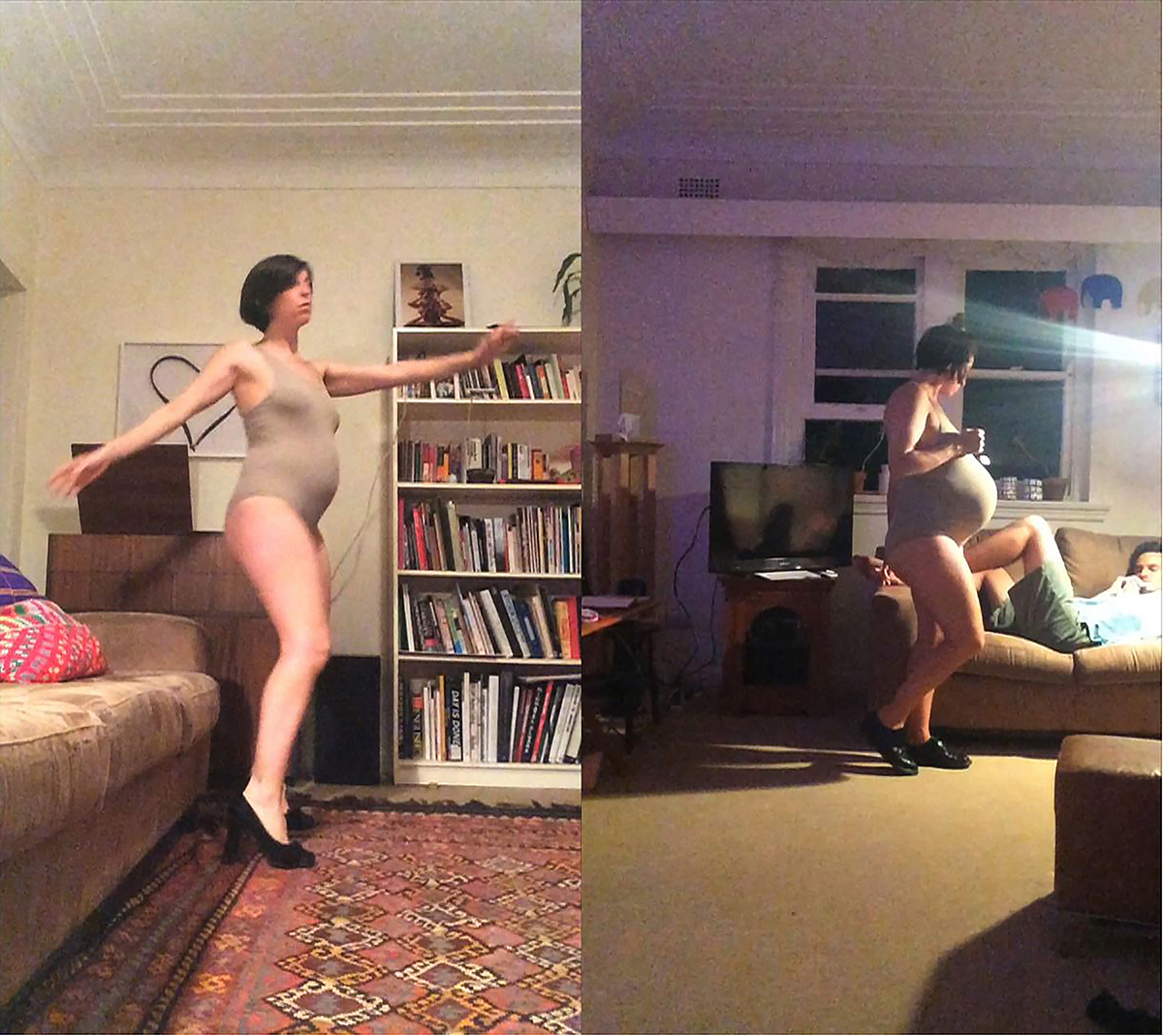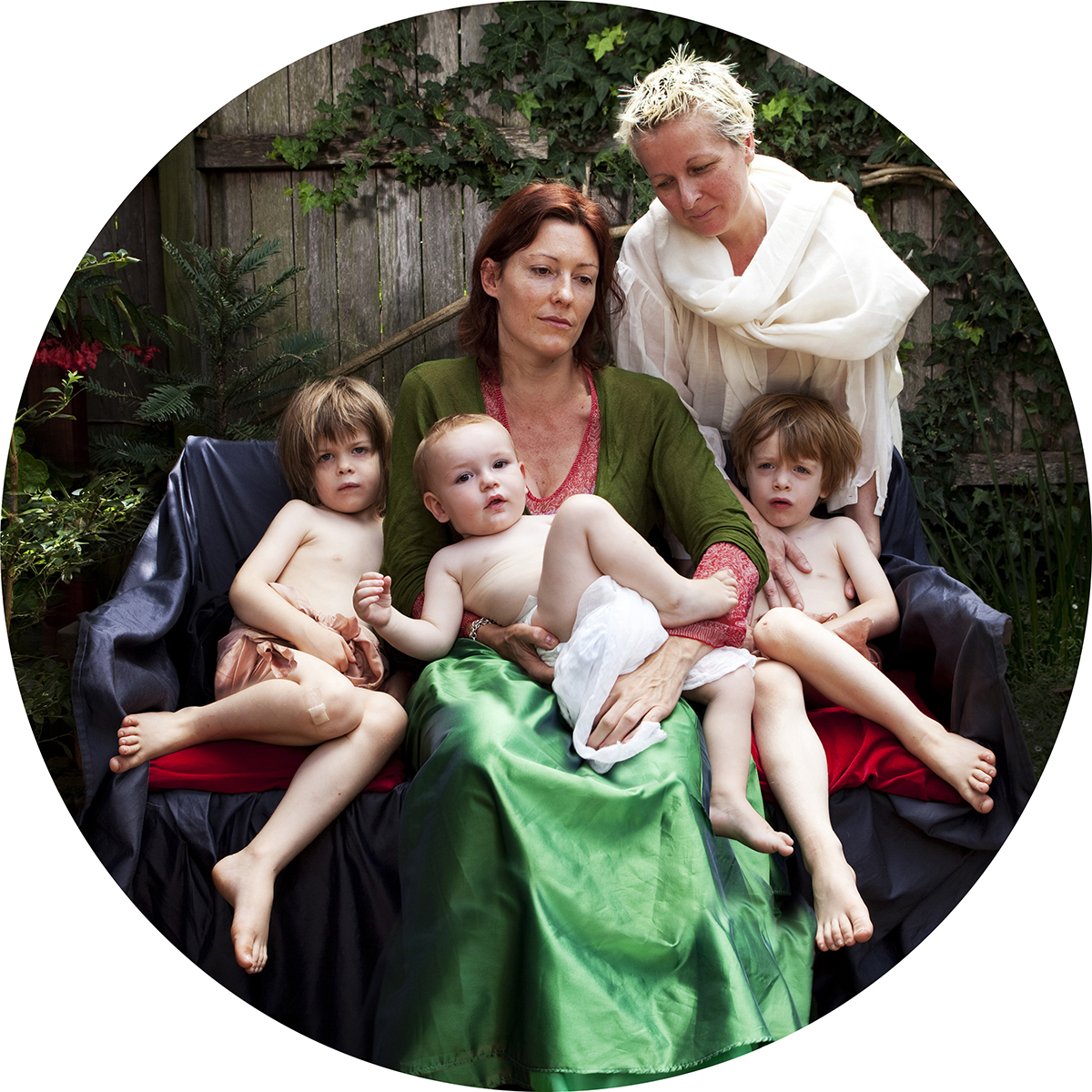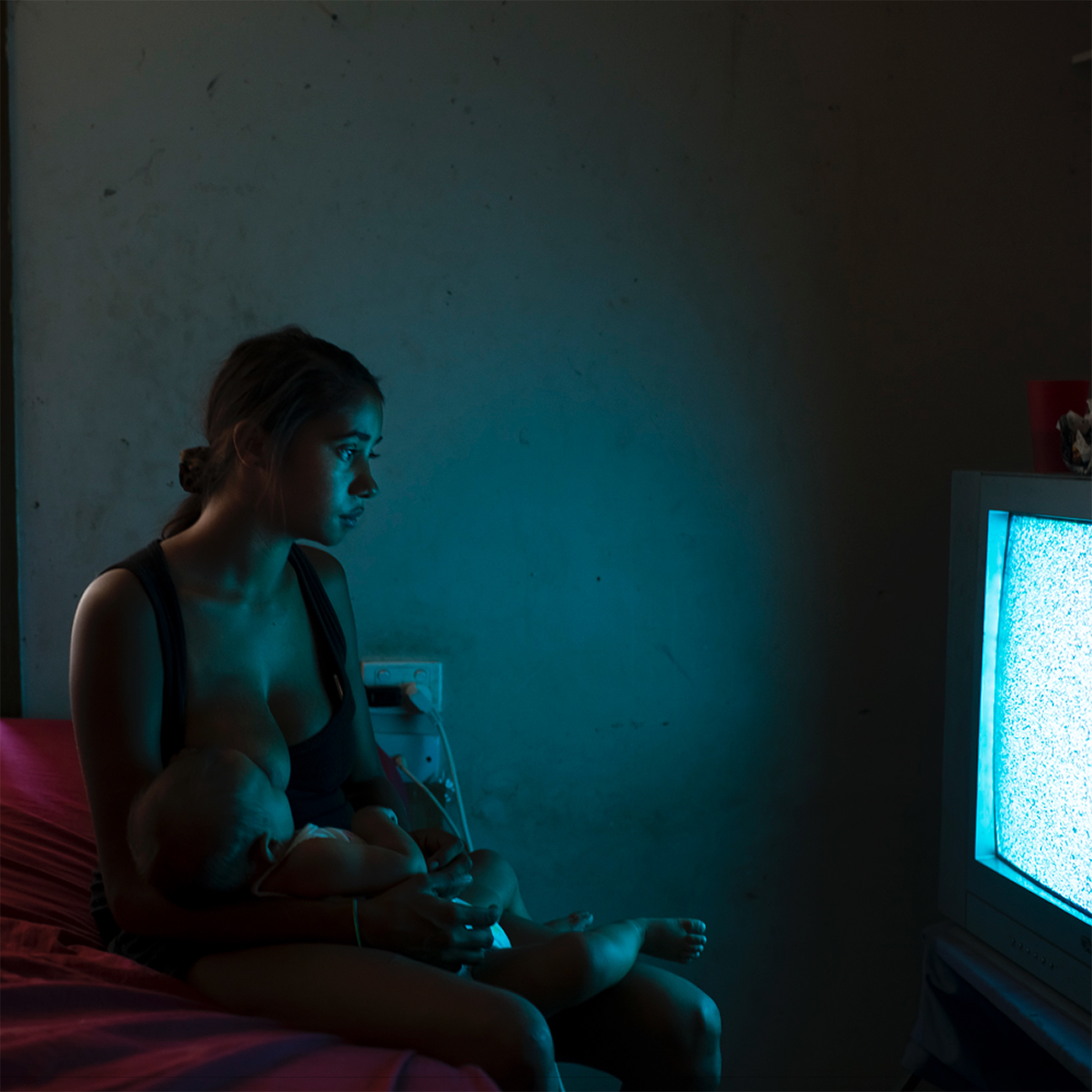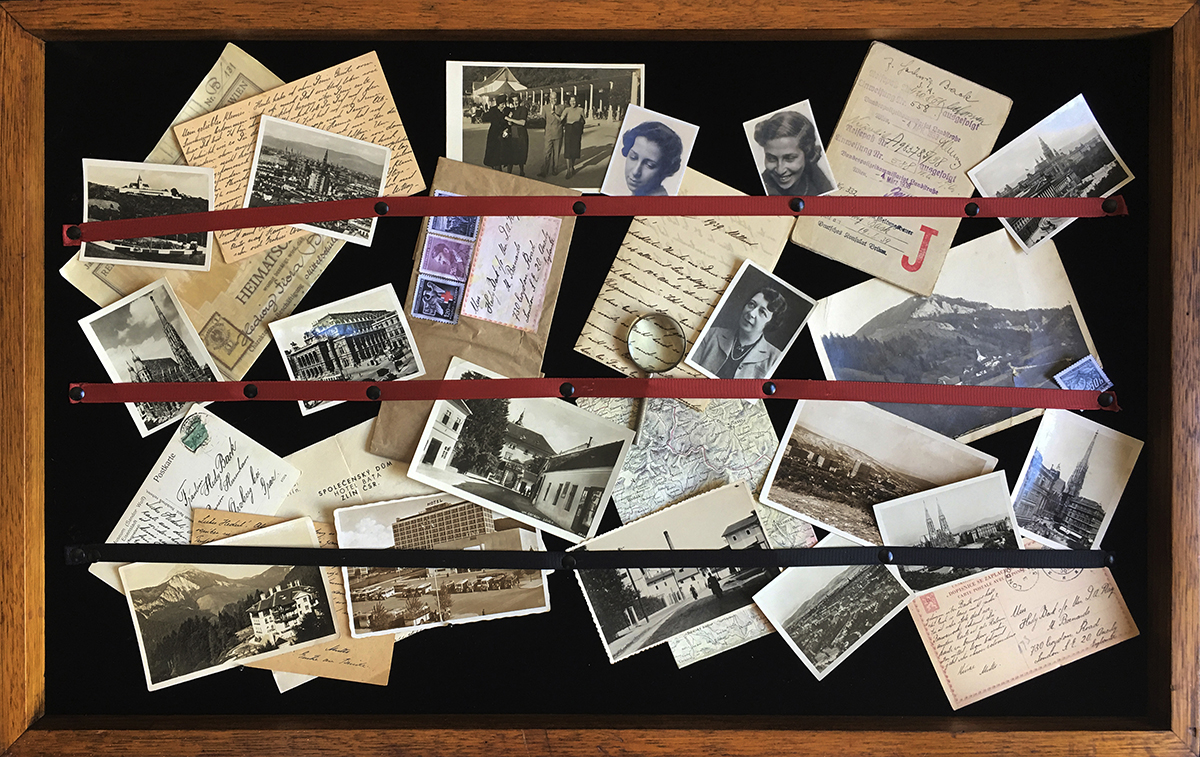
Envisioning the subjective maternal body
The body of our mother (In Utero) is an unaccountable memory. Our first house or home, how strange to imagine this memory. The further we travel from the nonsense of babydom, through ideally, the magic of childhood, to the here and now, the literate, logical, discerning world, the further away we get from this memory and the grainier the image becomes. If this imagining is a memory, it is a sense memory, embodied but forgotten. It is perhaps our most sensuous memory in a literal context, the memory of before thought. Children are atemporal, free of time, but mothers mostly are not. Perhaps this partly explains the sometimes horror of children/motherhood in our present time-structured, machine world.
The maternal body, rapidly colonised by the disciplines of medical science and technology in this century, is still intriguingly absent in the world of art. This body is a place where nothing is sacred or profane, the abject and strange up for grabs by the most everyday of artists. It is as magnanimous and invisible as the red-cloaked Bush Mary in Teena McCarthy’s self-portrait found in the Realising Mother exhibition curated by Zorica Purlija — undeniable, omnipresent yet cloaked and indiscernible. In major galleries and ARIs alike, where Sex and Death lurk around every corner, the subjective maternal body is absent, but not in Realising Mother.
As Serafina Lee elucidates in her catalogue essay, “Realising Mother articulates a critical subjectivity [and has us] question notions of autonomy and agency as a socially selective privilege granted to specific bodies. We consider our own relations and involvements with these bodies. We are urged to adjust our own position, to afford an expanded logic, one that realises the maternal body as unmoored from its genealogical and representational constraints.”
During the exhibition opening I occasionally managed a whole adult conversation (despite the fact that my date for the night was my three-year-old son) thanks to the artistic creation and ritualistic documentation of 02-02, 2014-15, a live performance and video by Rafaela Pandolfini; Claude was mesmerised! Did he intuit his own journey in a pregnant mother giving form to her formlessness through visual documentation of a ritualised dance or just find this uncouth display of animated pregnant dancing as liberating as Pandolfini did herself? This artist elegantly jitterbugs to the intimacy of a body within a body, perhaps an artwork in itself!

Deborah Kelly, The Miracles After after del Sarto, from series: The Miracles, 2012, Realising Mother, Kudos Gallery, Sydney
Deborah Kelly takes on the miraculous family of the Bible, creating new permutations in her Miracles series, wonderful adaptations of paintings by old masters. Kelly’s 35 miracle portraits (three of which were on show) are of simply anything but the hetero-normative and biological baby-making families of history. With the advent of ART (Assisted Reproductive Technology) we have seen an expanding of the scope of family; Deborah Kelly uses a different art to make these new family forms boldly visible.
Raphaela Rosella busts open a different part of the dominant discourse on family with her divinely luminescent and proud portrait of Tricia and Ty-Leta (2016): a young Aboriginal woman breastfeeding her baby in the light of a staticky television screen. It was my favourite image in the show; shocked by its beauty, I was not surprised to read how Rosella had spent time with Tricia breastfeeding their babies and that she photographs women she is connected with. This begs the question of gaze, and how the photographer sees, being implicit in what is depicted. Rosella’s role as an embedded storyteller, a mother herself, is a defining factor in her capacity to capture the resilience of the young mothers in her photographs.

Raphaela Rosella, Tricia and Ty-Leta, 2016, Realising Mother, Kudos Gallery, Sydney
Anguish might seem to be a recurring motif when one turns the lens on mothers. Anne Zahalka speaks of an unbridled bond in relationships between mothers and daughters in her heartbreaking exploration of her grandmother’s letters to her daughters before her murder in Auschwitz. Having left their family home in Vienna in 1938 following persecution, the daughters fled to Czechoslovakia, eventually finding safe passage to England. Zahalka uses a collection of artefacts including letters, photographs, postcards and archival documents left to her after her mother’s death, to construct a textual still life which, hanging like an artwork of seemingly random points of connection, mapping chronological intersections, overall has a breathtaking beauty. Alongside it is a video work comprising letters written by the mother to her children after their separation, transcribed from German to English and, embedded in a table top, viewed from above. This translation gave the artist historical insight into this very poignant love between mother and daughter over 70 years ago, and makes it available for reinvention and interpretation by the artist and her own daughter in the present day.

Anne Zahalka, Rewriting, 2017, video production Orson Heidrich, pinboard: letters, photographs and other ephemera, Realising Mother, Kudos Gallery, Sydney
These are just some of the powerful and unexpected works exhibited in Realising Mother. Sally McInerney’s photographs capture everyday moments in the lifespan of motherhood including her own mother, renowned photographer Olive Cotton with Sally’s own daughter. Denise Ferris developed a technique of using breastmilk in screen printing to ruminate on ambivalence and resistance, death and nurturance in motherhood. Sarah Rhodes explores how language and place connect child and mother in embodied learning in Indigenous culture. Clare Rae charts the literal territory of the maternal body, photographed in a series of juxtapositions in Sutton Gallery, before and after birth. The exhibition also included variously explosive, dynamic, playful and remarkable works by Ella Dreyfus, Lottie Consalvo, Theresa Byrnes, Donna Bailey, Julie Sundberg, Miho Watanabe and Anke Stäcker.
Never has an art exhibition been so embodied, the body so present, even if reflected through the lens. Absent/hidden bodies, dancing bodies, clutching/bonding bodies, performed/artifice-d bodies, collaborative bodies, lesbian and gay (or LGBTQI) bodies, single, Blak, social, historical, cultural, child and maternal bodies. A body in which something may or may not grow but assumes this indiscernible yet vast conception of the maternal. This vision of the maternal body I now ponder deeply, is so expansive! Unlike the m(other) body of the Male Gazing Art Canon, the meanings alchemised in Realising Mother explode open a sentimentalised, infantilised, worshipped even, other body and restores agency to the lens. The exhibition puts this real and messy, imperfect and beautiful, often unexpected maternal body back front and centre.
–
Realising Mother, curator Zorica Purlija, artists Denise Ferris, Sally McInerney, Julie Sundberg, Ella Dreyfus, Anke Stäcker, Deborah Kelly, Raphaela Rosella, Miho Watanabe, Sarah Rhodes, Teena McCarthy, Clare Rae, Donna Bailey, Anne Zahalka, Rafaela Pandolfini, Theresa Byrnes, Lottie Consalvo; Kudos Gallery, Sydney, 1-13 Nov
Jasmine Salomon is a mother of four, a scholar of the maternal in art, a midwifery graduate and a curator who has no formal childcare and is re-wilding and unschooling her two youngest children on a headland in mid-north NSW. Her praxis centres around presence, she is investigating several philosophical propositions including the idea that all humans are artists (especially children), that children inherently collectivise for the positive, that genuine collaboration in art (especially with children) is a powerful tool for social change.
Top image credit: Rafaela Pandolfini, 02- 02, 2014-15, a dance for every day of my pregnancy, live performance and video, Realising Mother, Kudos Gallery, Sydney






